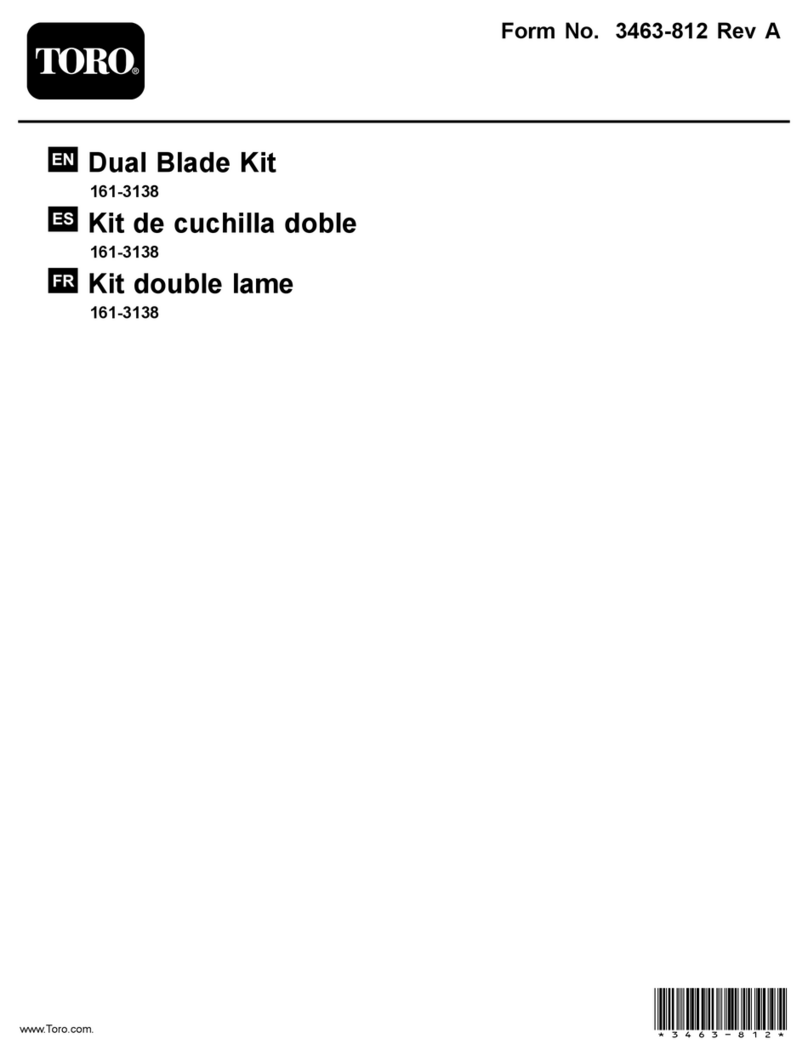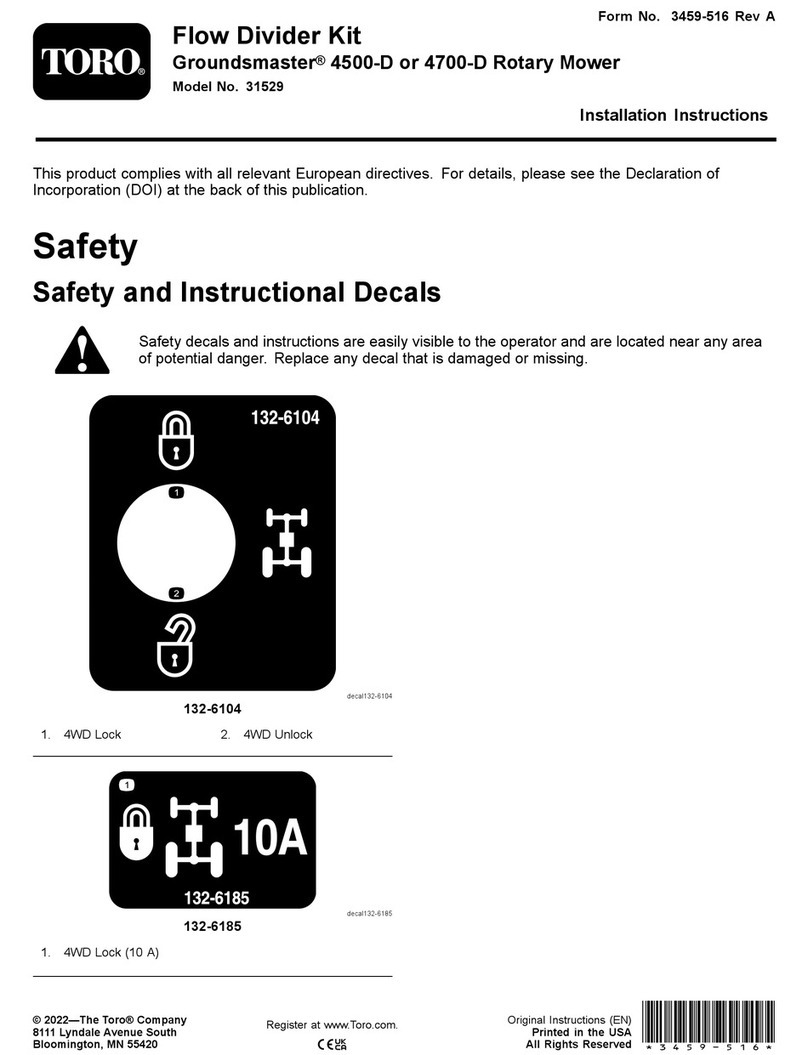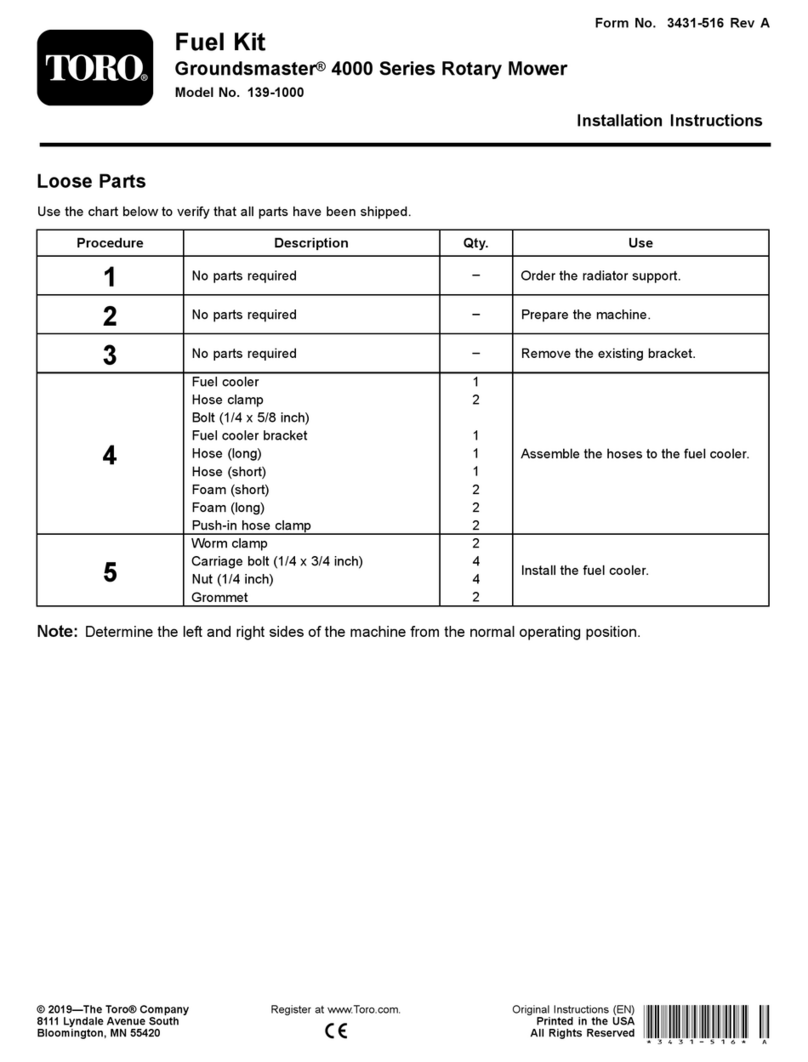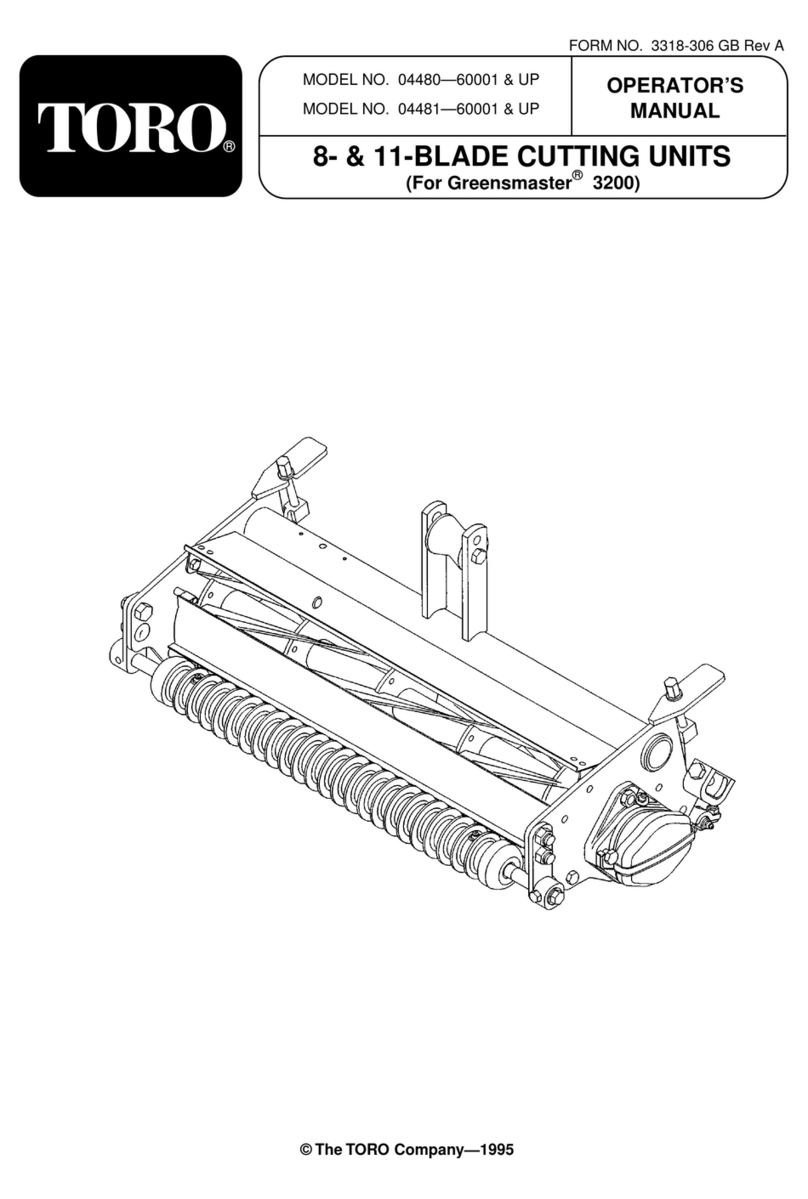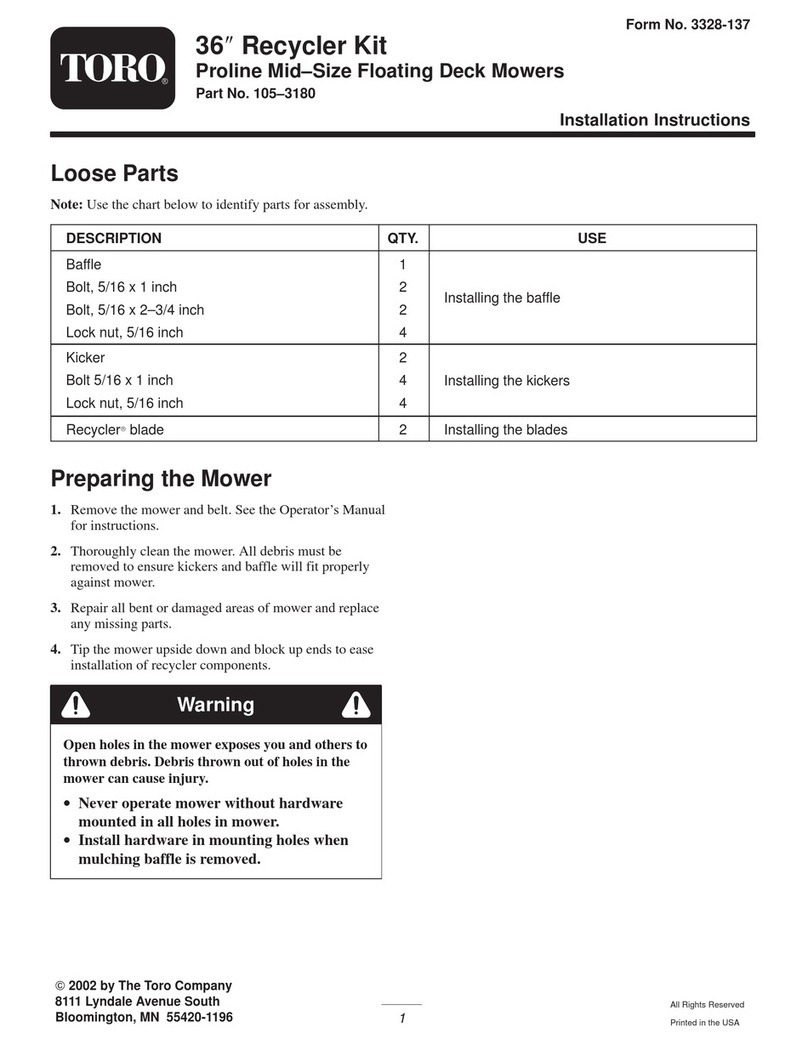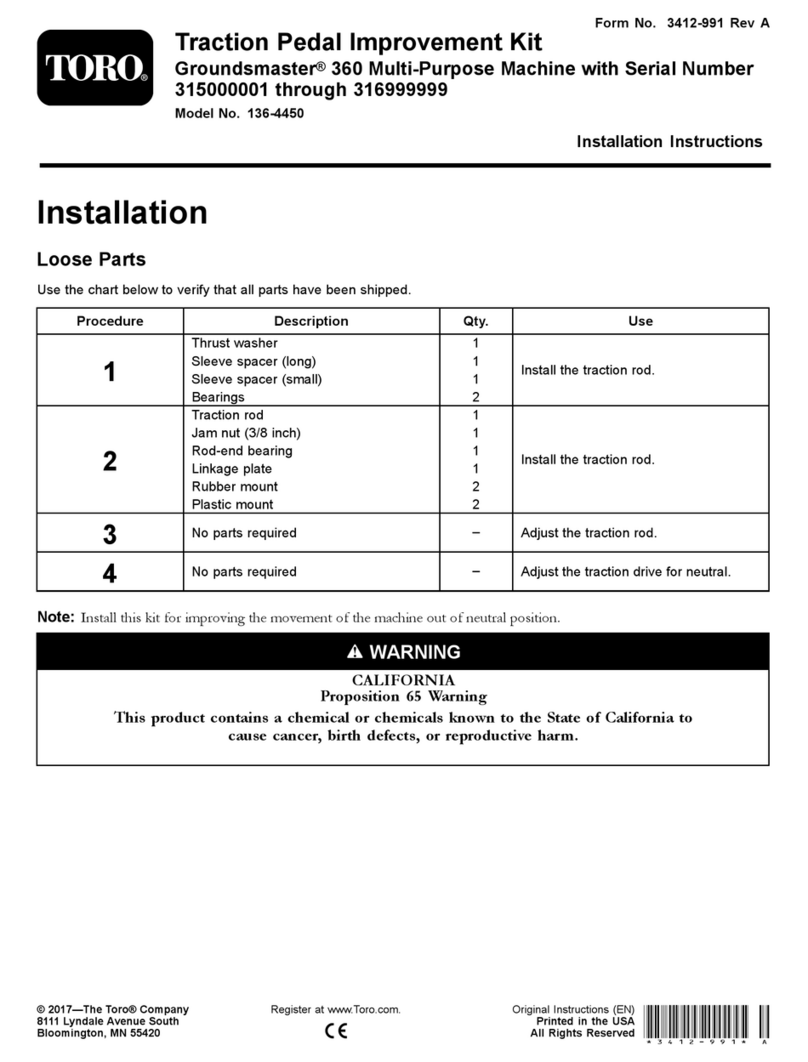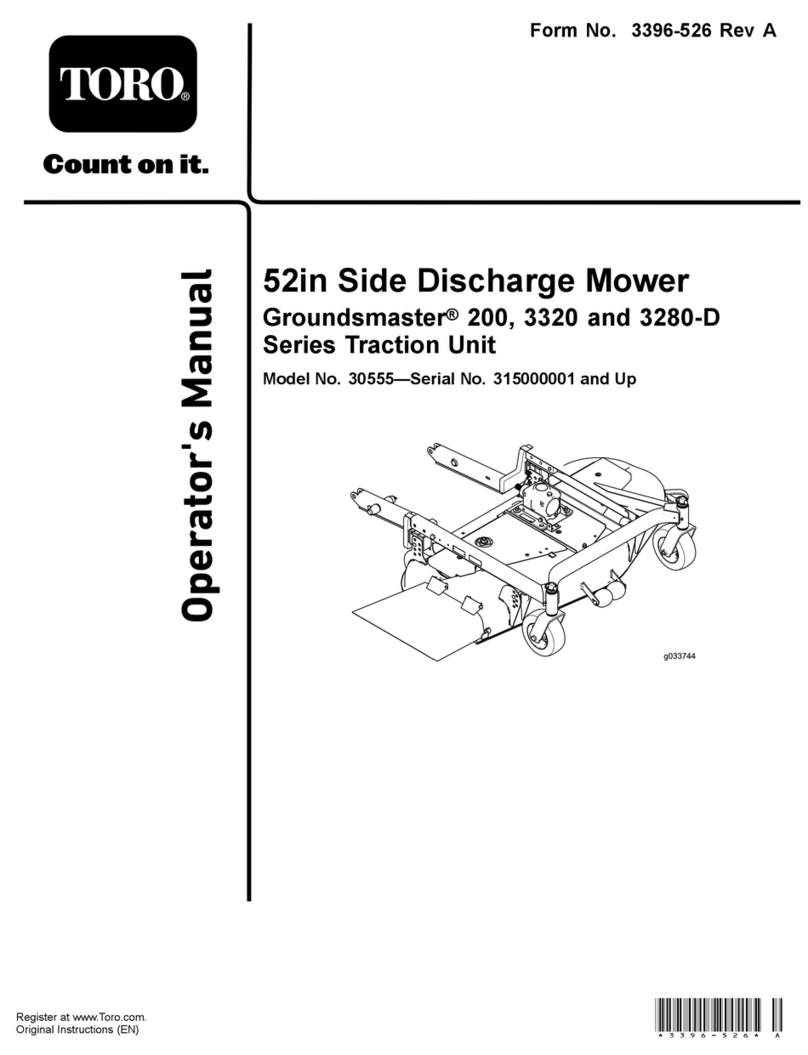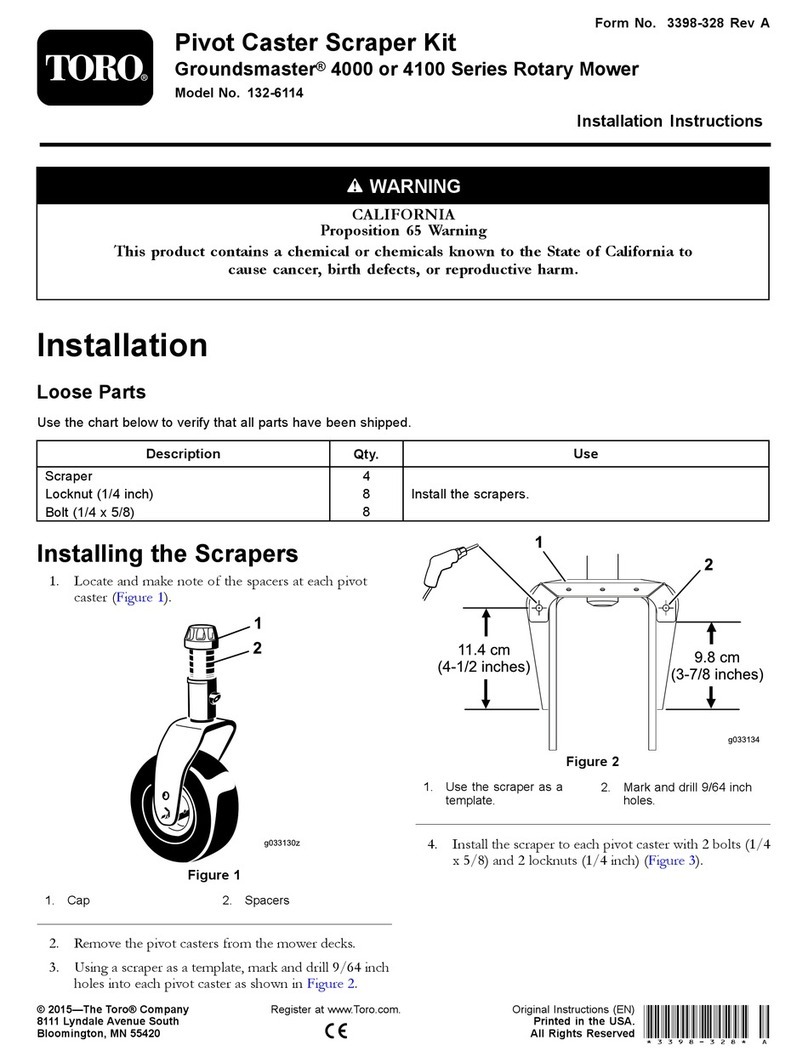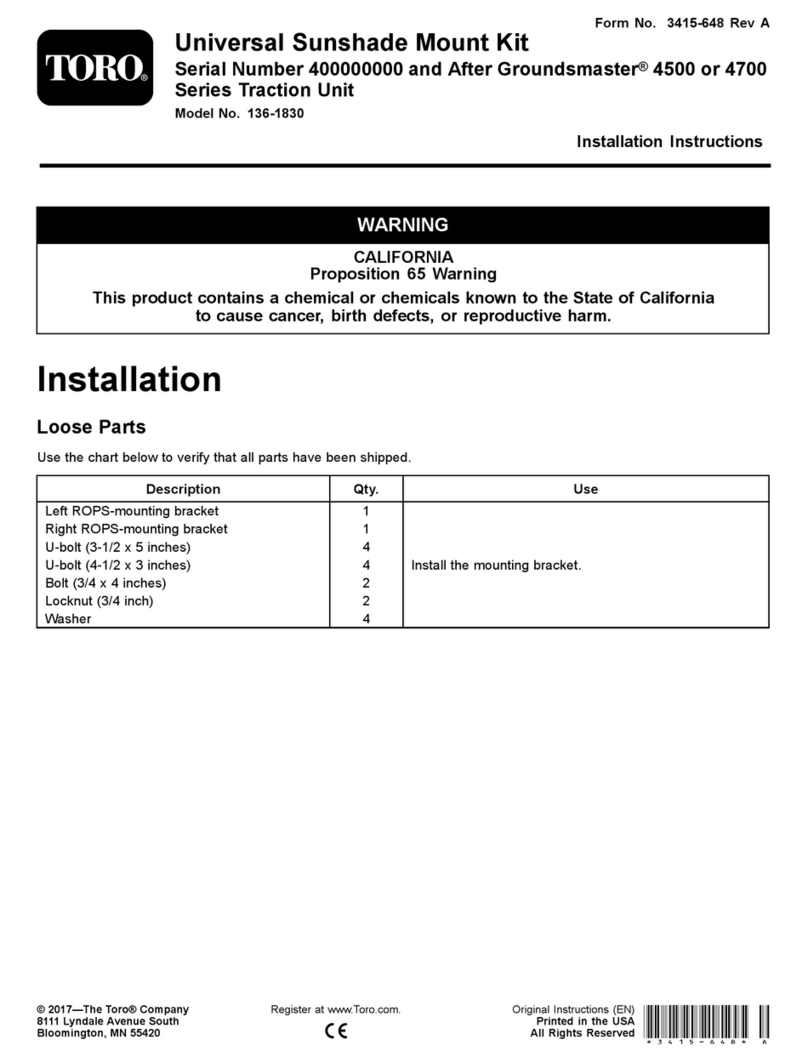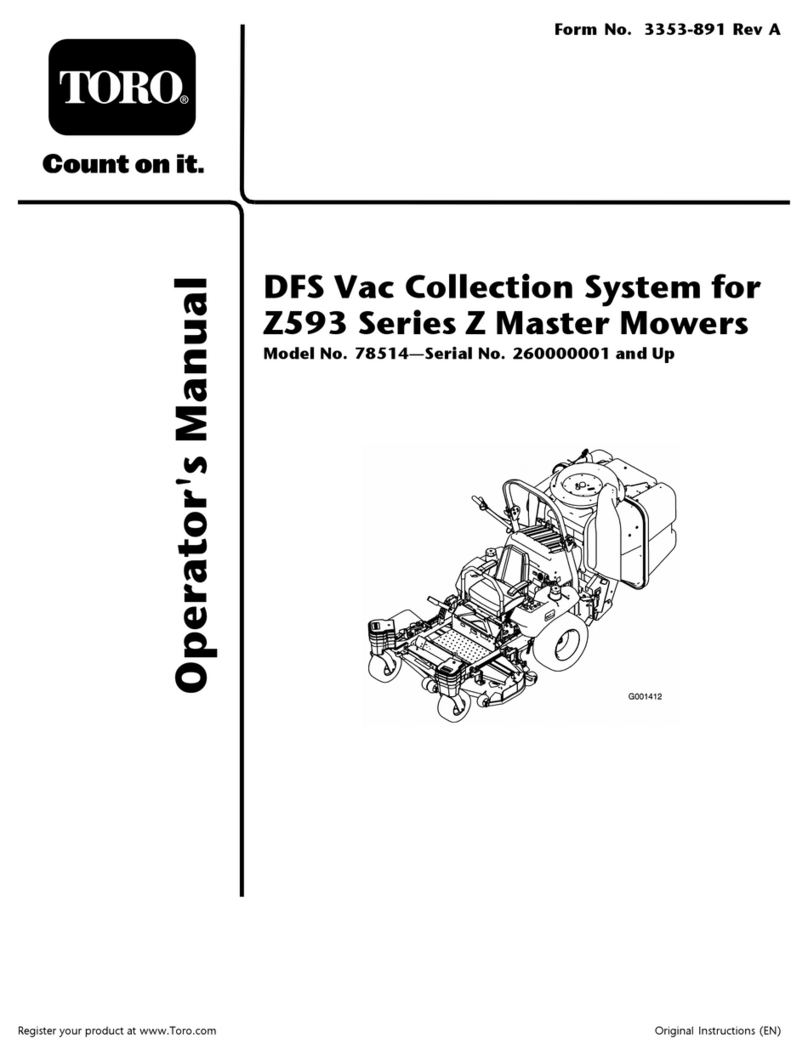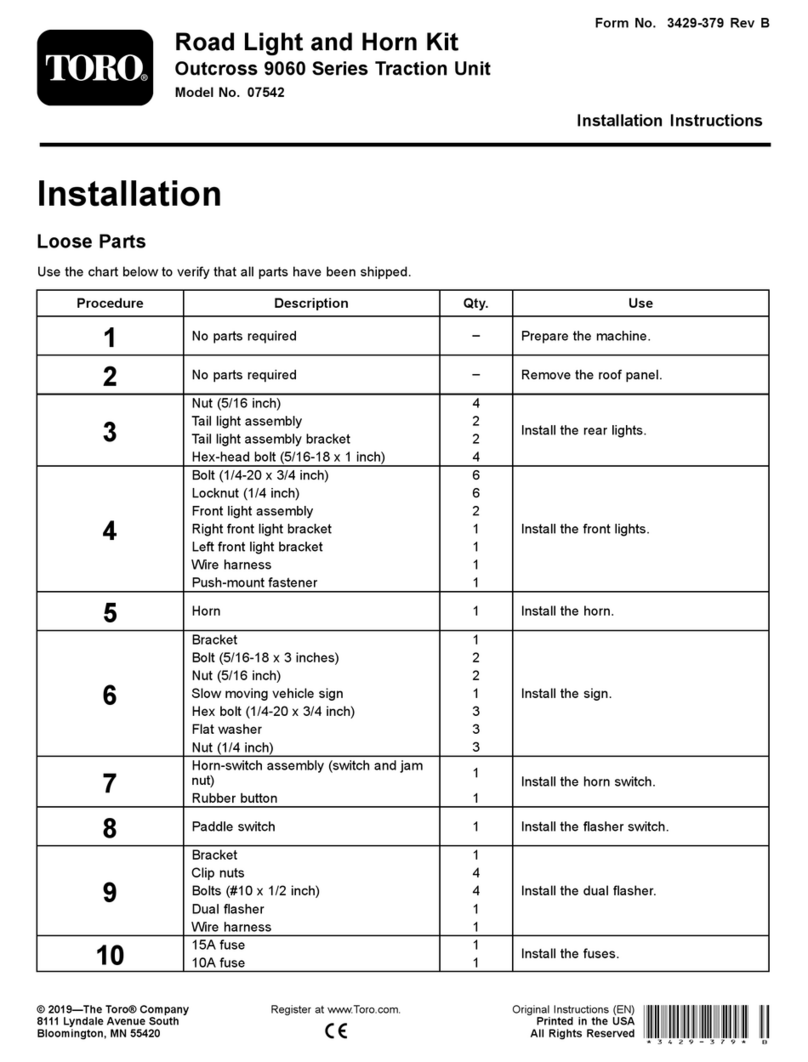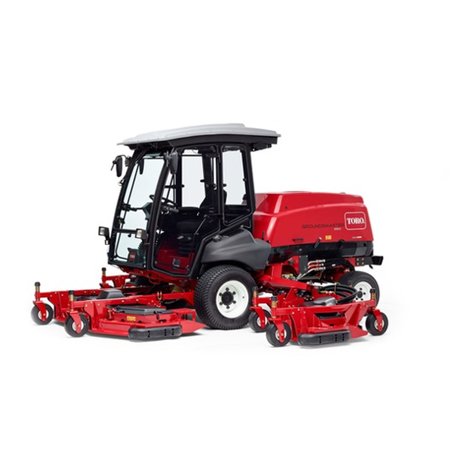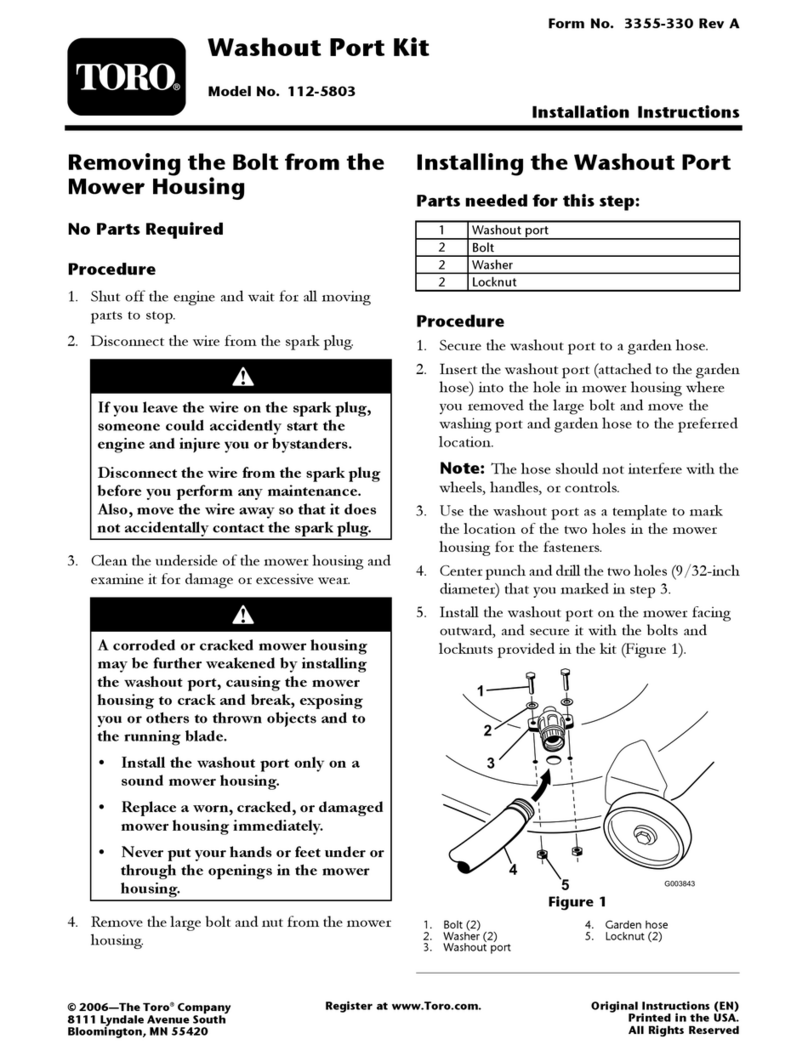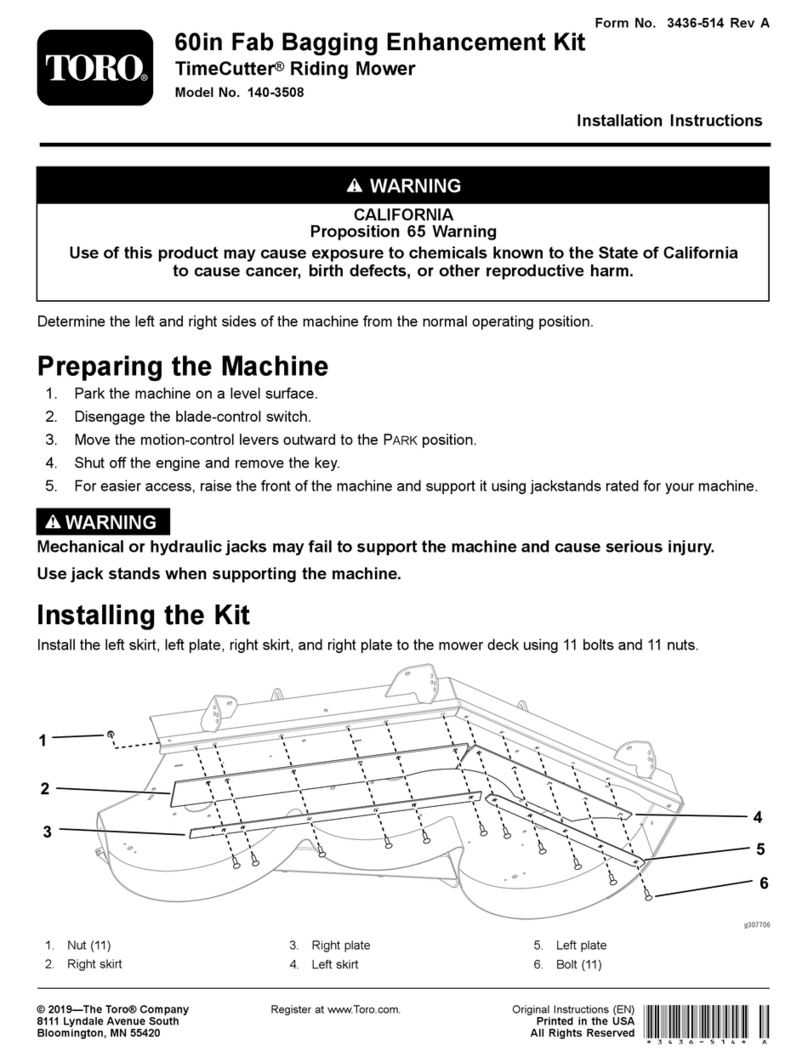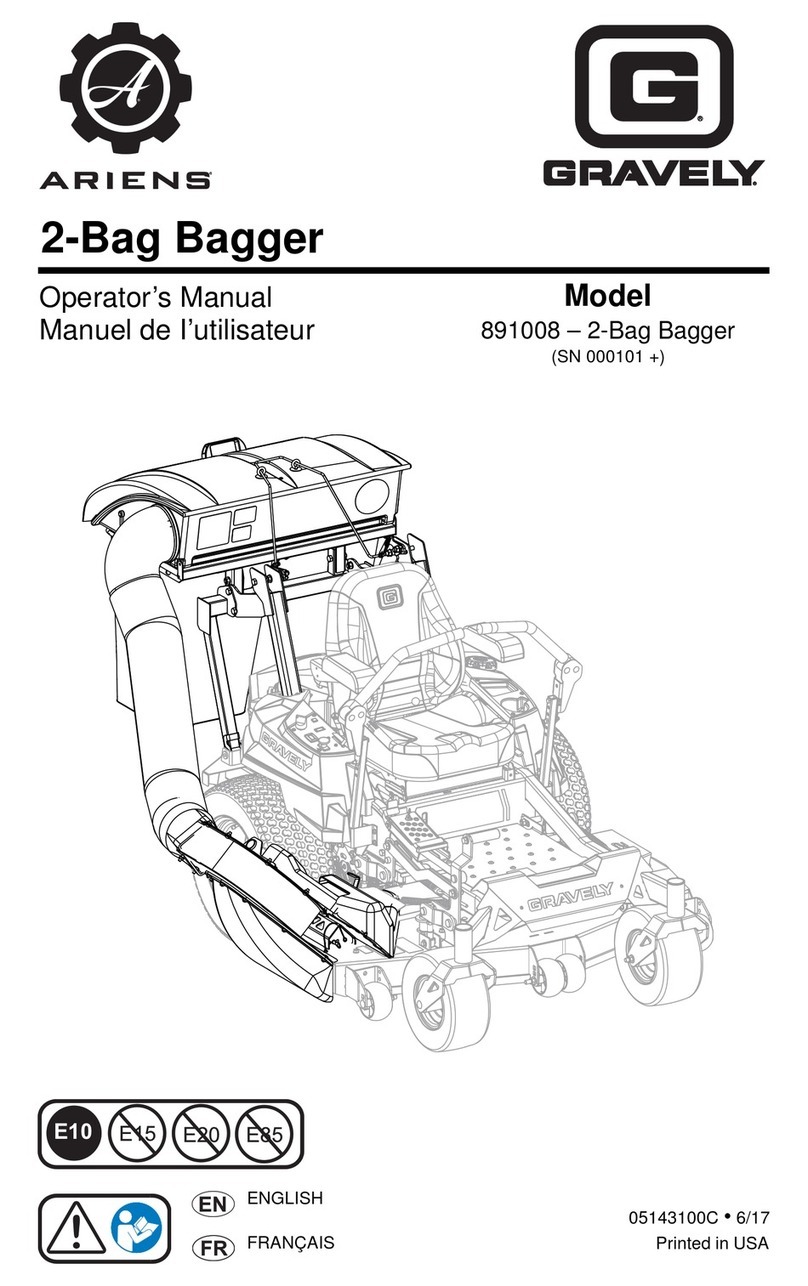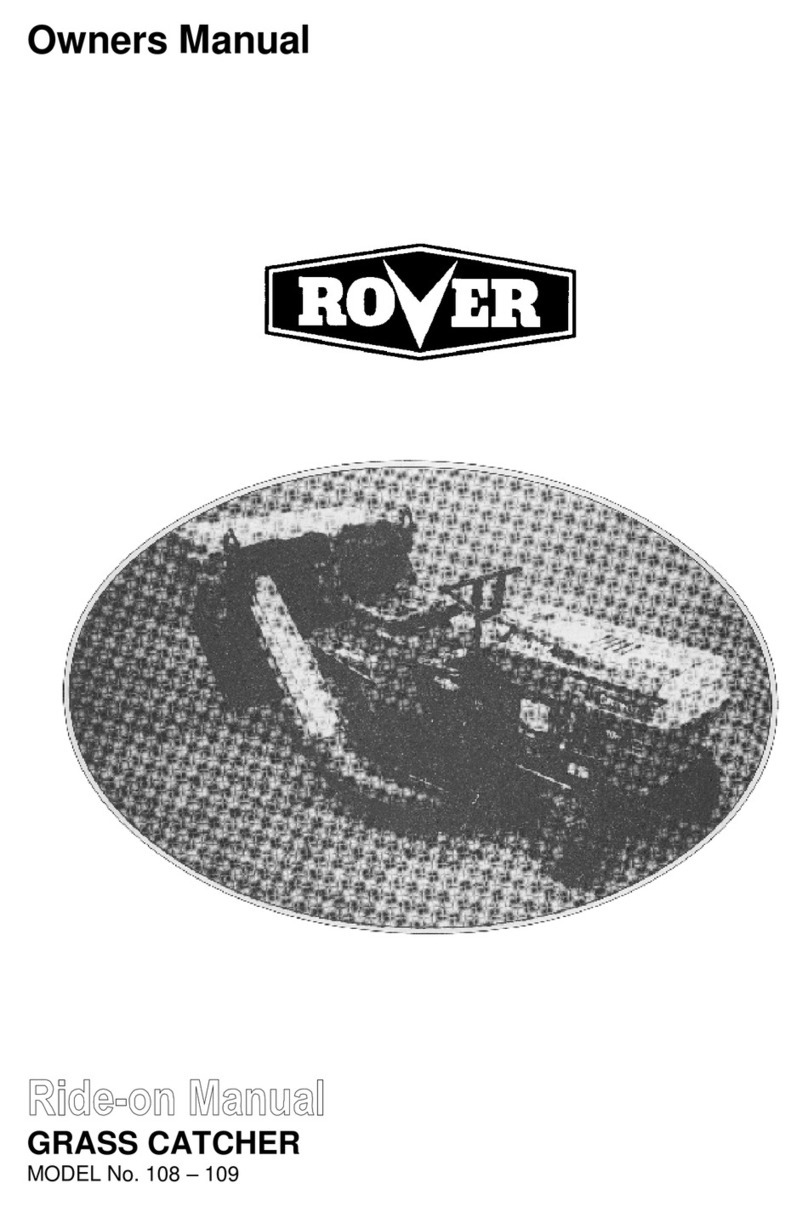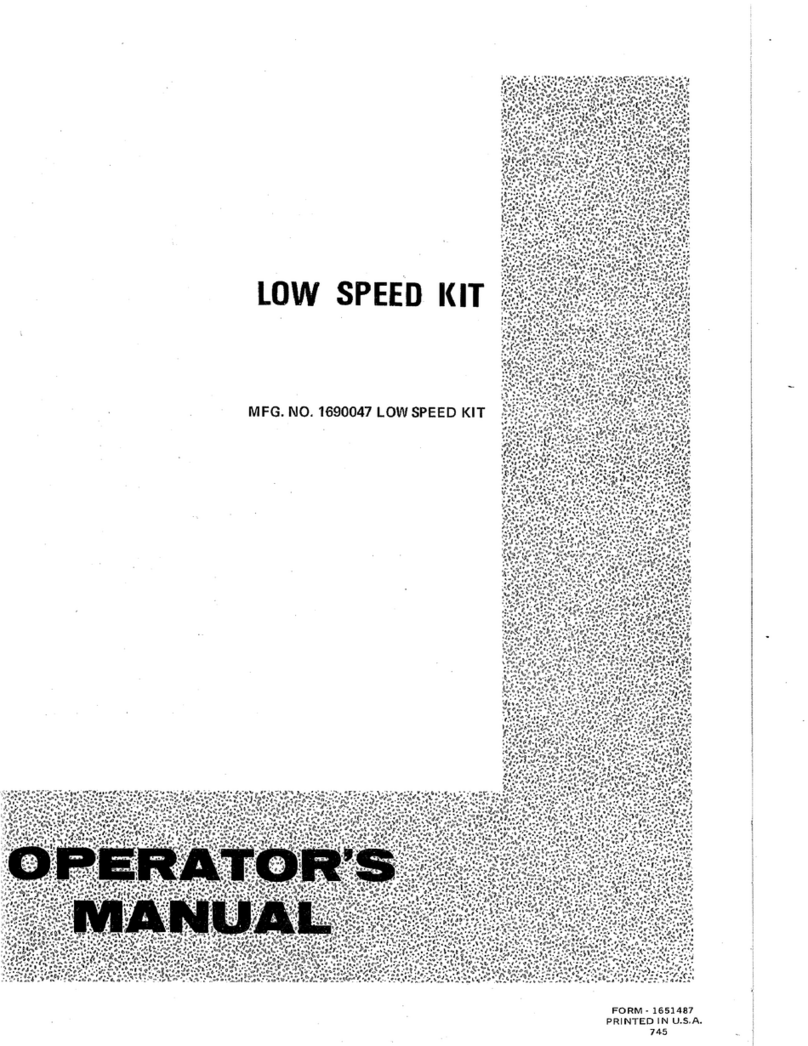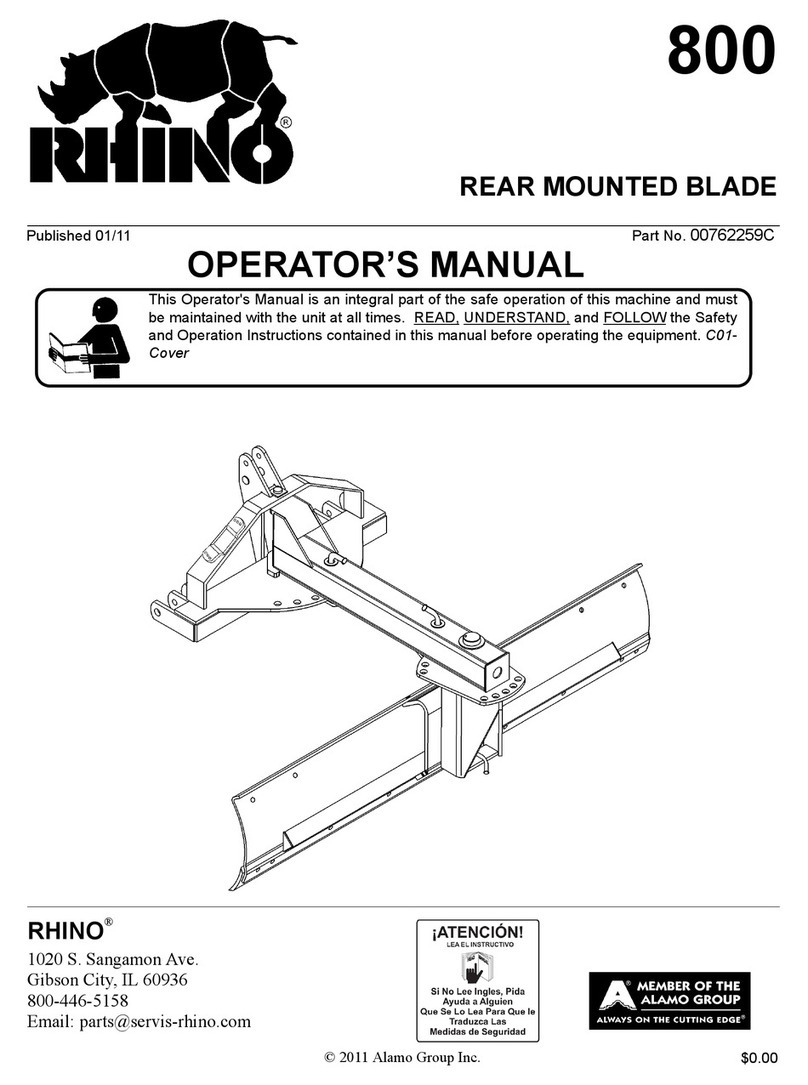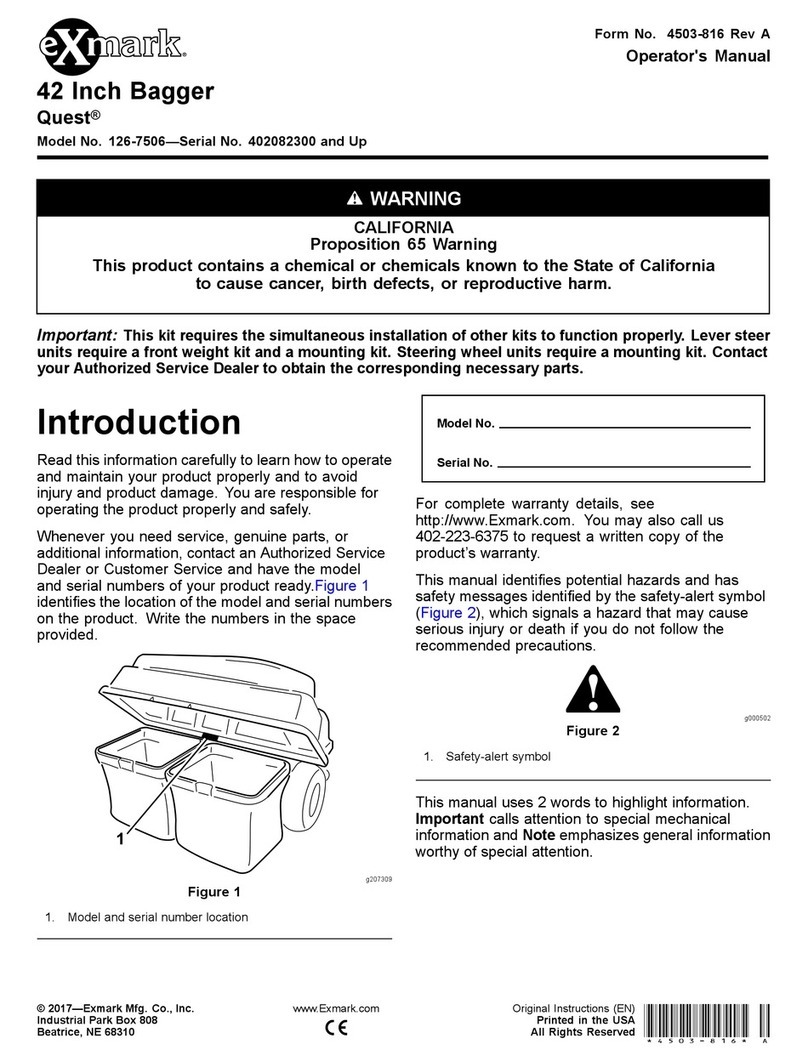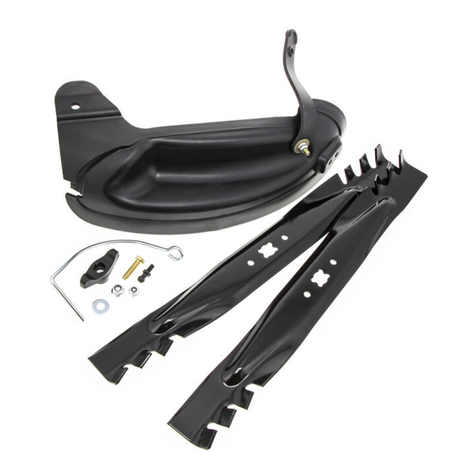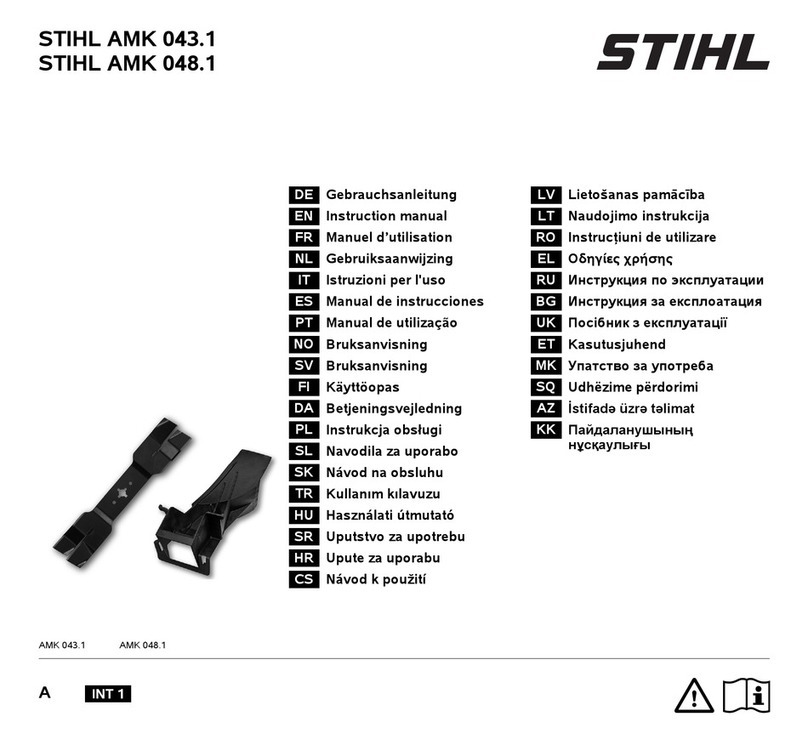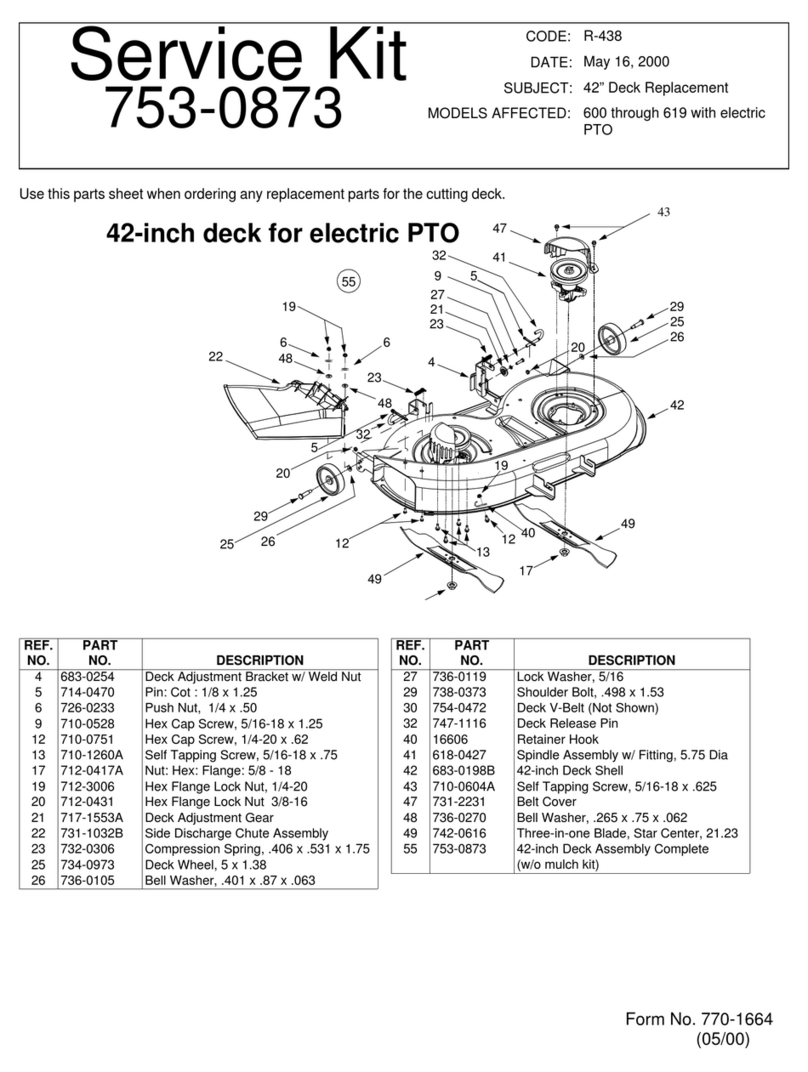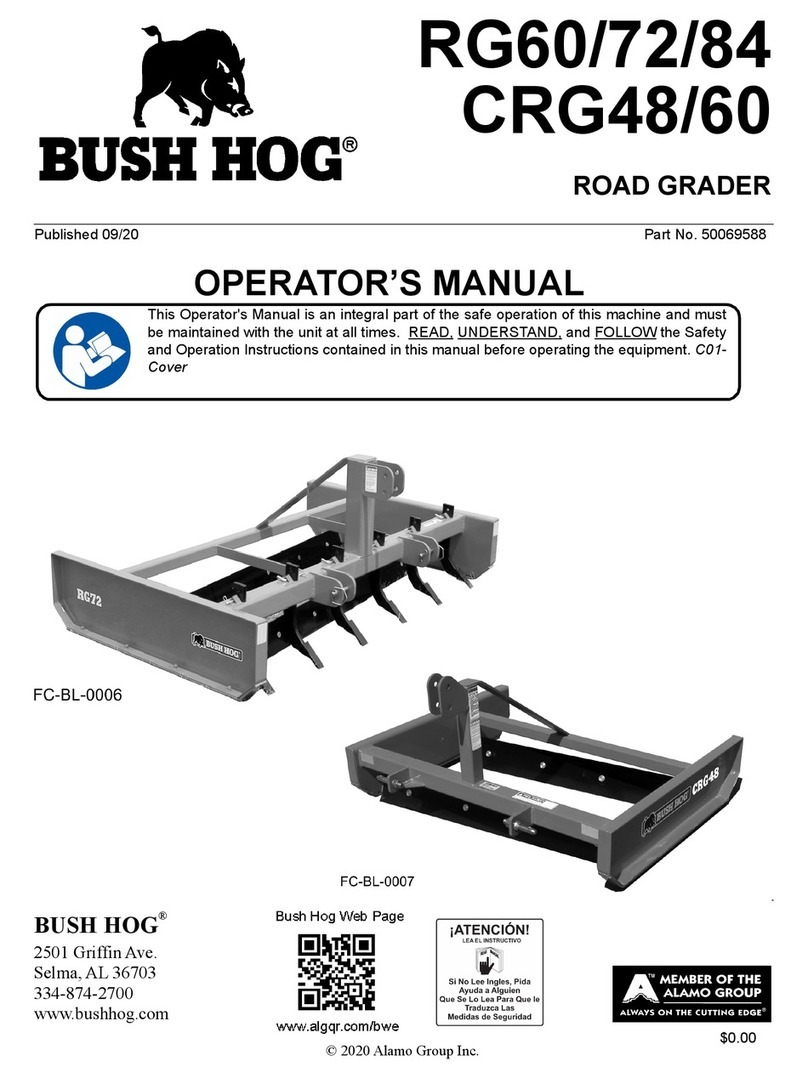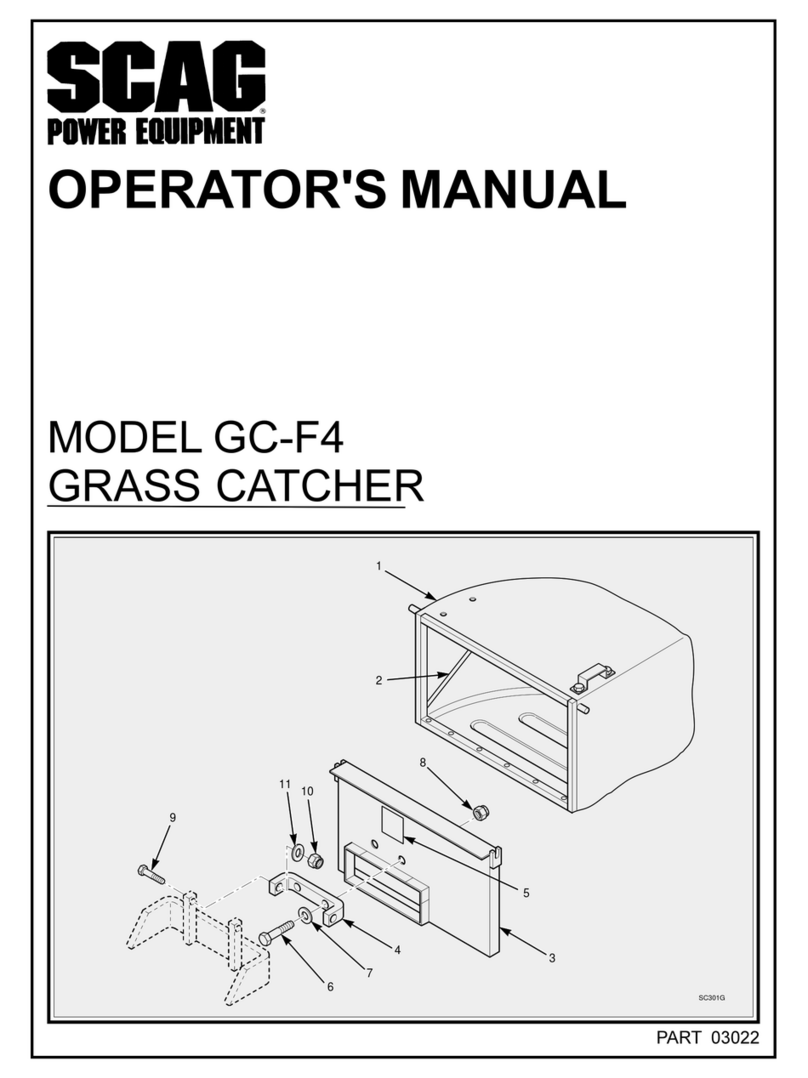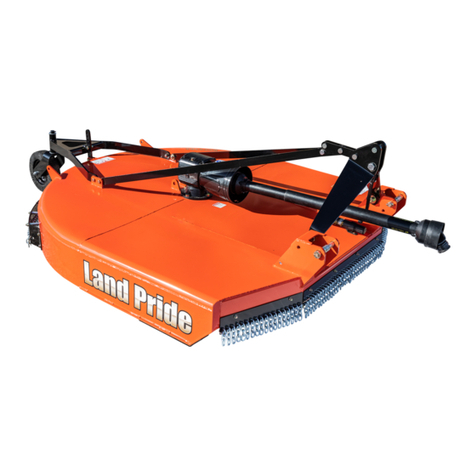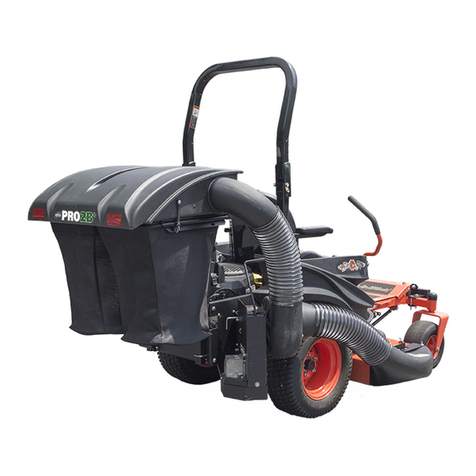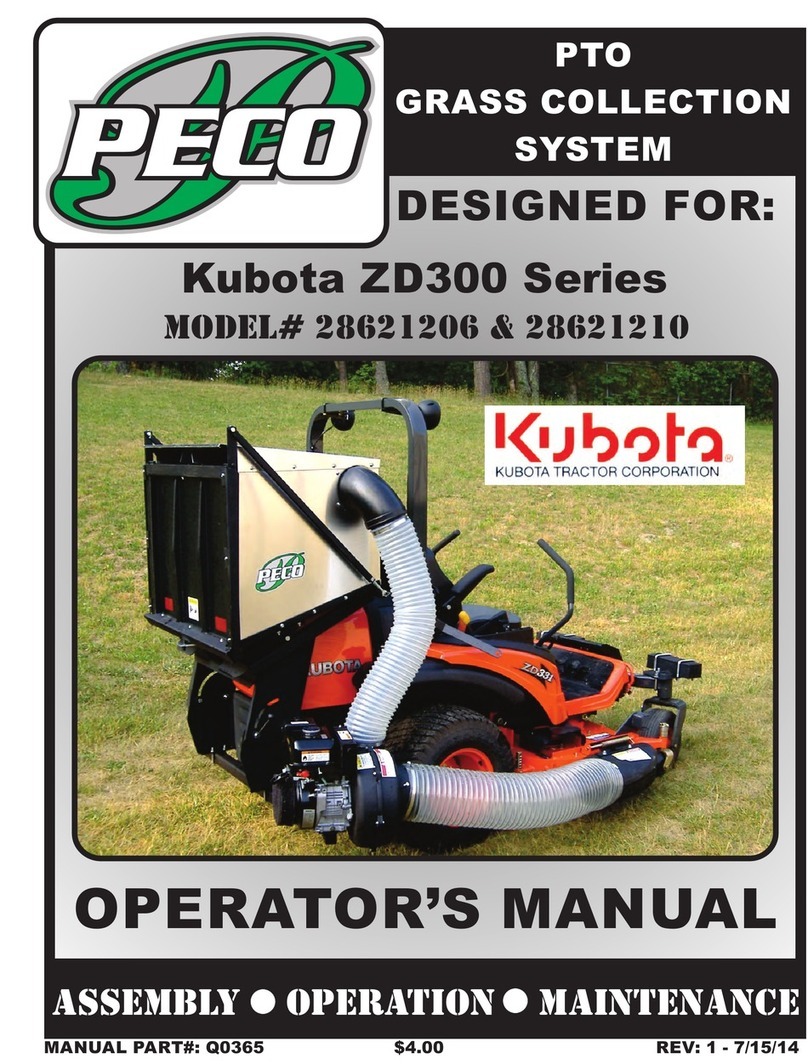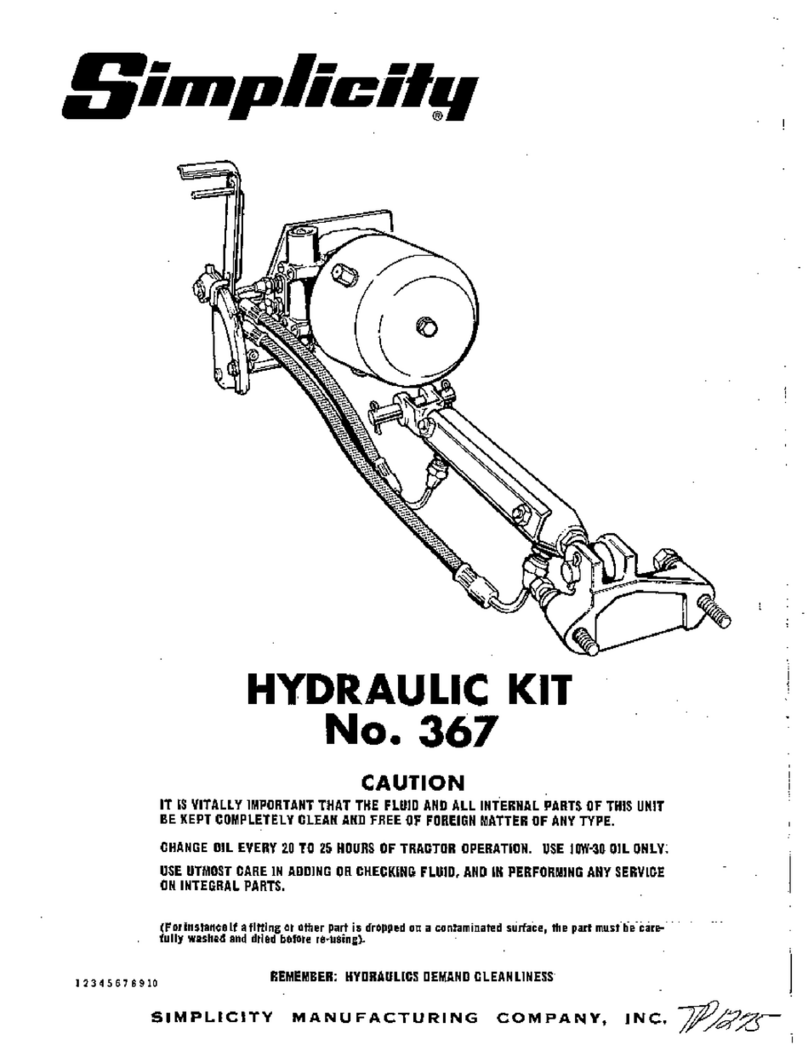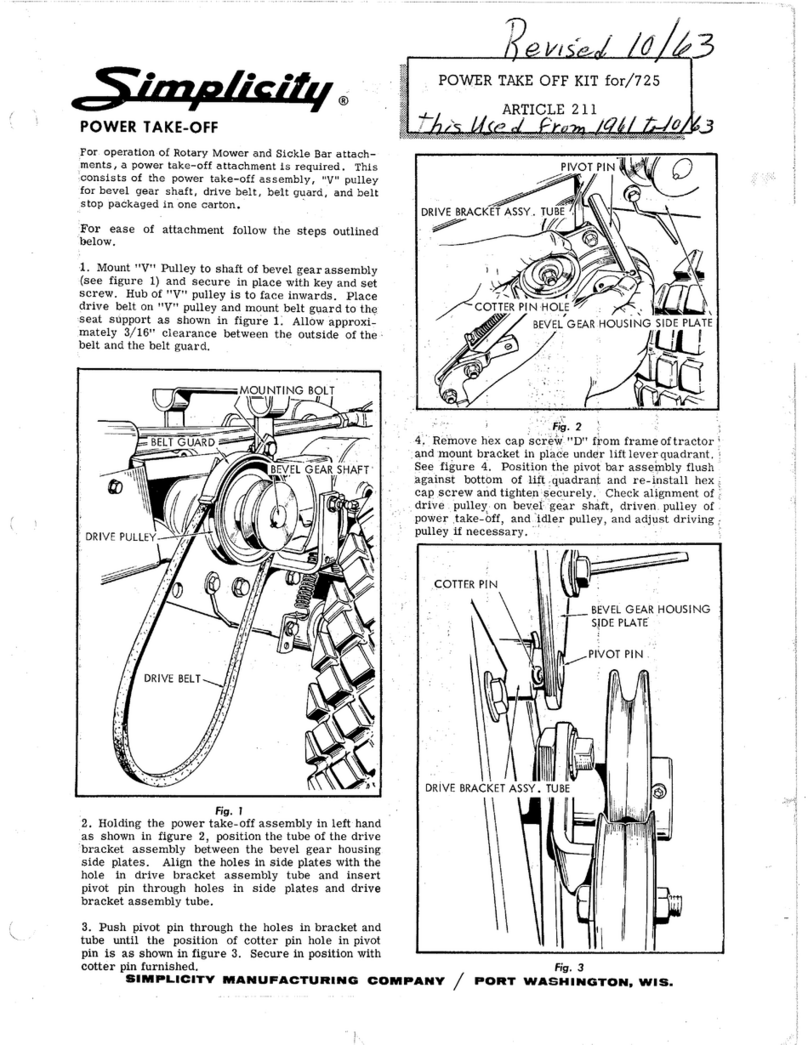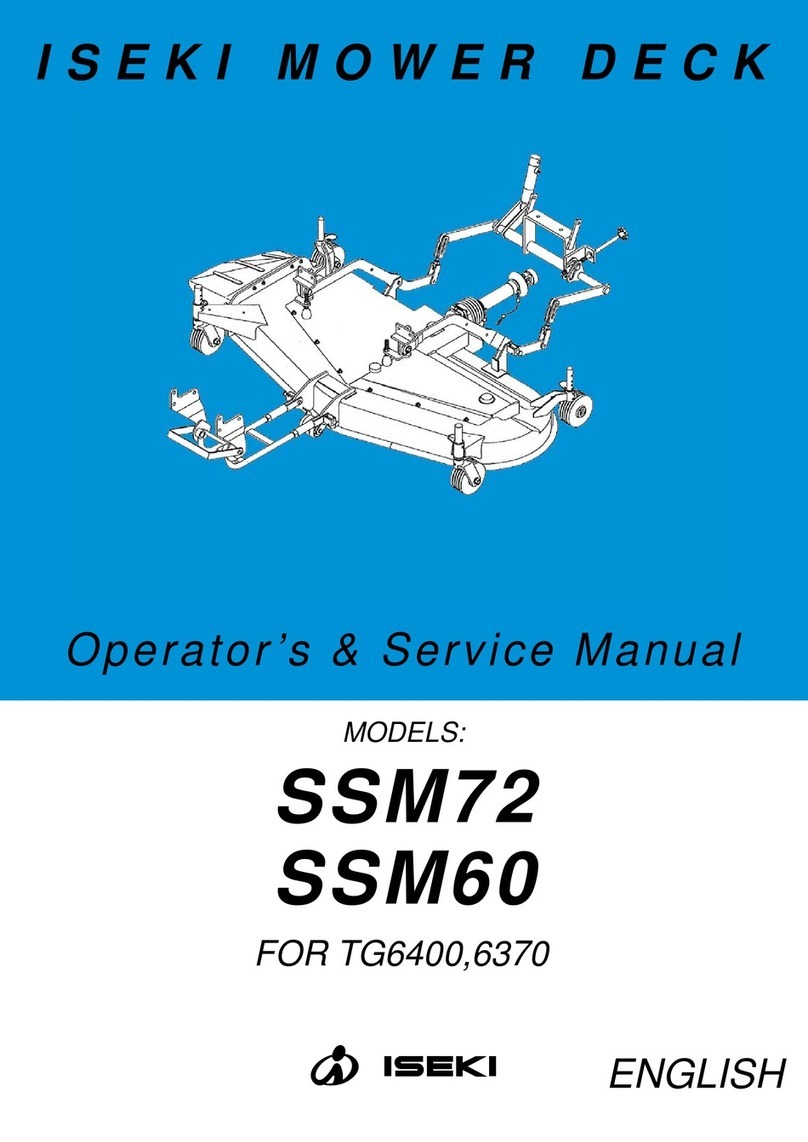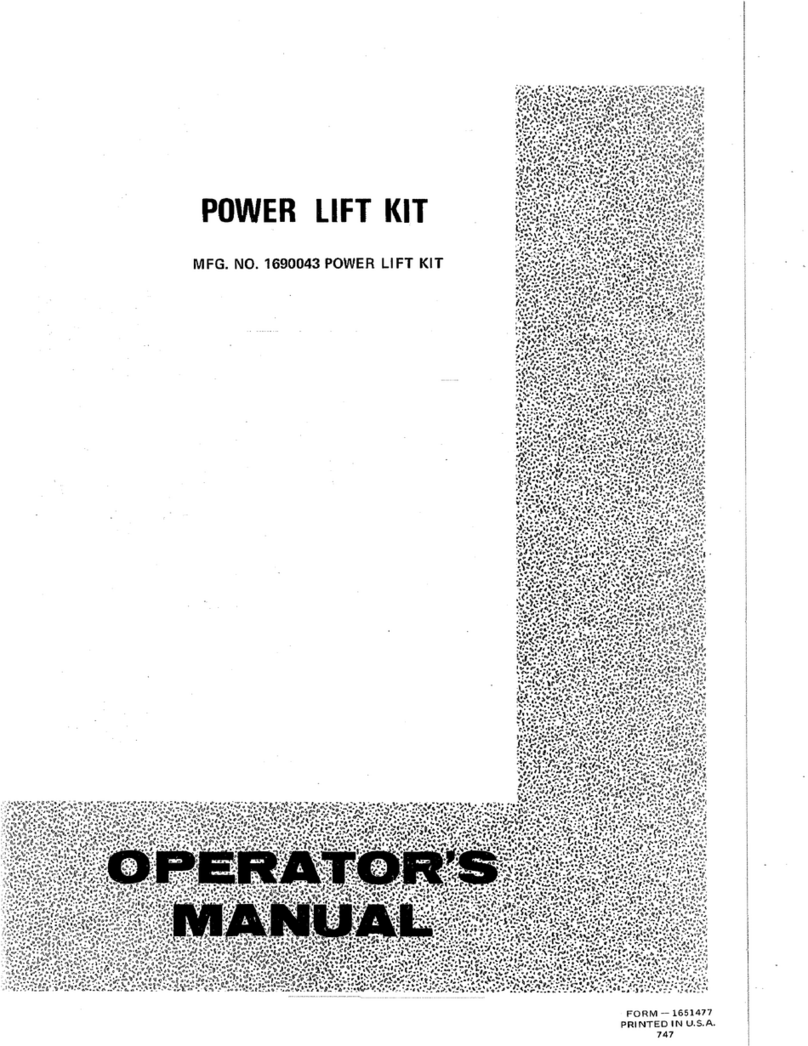
2
•Operator must be skilled and trained in how to drive on
hillsides. Failure to use caution on slopes or hills may
cause loss of control and vehicle to tip or roll possibly
resulting in personal injury or death.
•Traverse slopes carefully. Do not start or stop suddenly
when traversing slopes or when traveling uphill or
downhill.
•If engine stalls or machine loses headway and cannot
make it to the top of a slope, do not turn machine
around. Always back slowly straight down the slope.
•Using the machine demands the operator’s complete
attention. To prevent loss of control:
– Operate only in daylight or when there is good
artificial light.
– Drive slowly.
– Avoid sudden stops and starts.
– Look behind machine before backing up.
– Watch for holes or other hidden hazards.
– Do not drive close to a sand trap, ditch, creek, or
hazard.
– Reduce speed when making sharp turns and when
turning on a hillside.
– The cutting deck must be lowered when going down
slopes for steering control.
•The grass deflector must always be installed and in
lowest position on the cutting unit when blower
assembly is removed. This product is designed to drive
objects into the ground where they lose energy quickly
in grassy areas. However. don’t take an injury risk!!
When a person or pet appears unexpectedly in or near
the mowing area, STOP MOWING. Careless operation,
combined with terrain angles, ricochets, or improperly
positioned guards, can lead to thrown object injuries.
Do not resume mowing until area is cleared.
•Never raise the cutting unit while the blades or other
parts are rotating.
•If cutting blades strike a solid object or the machine
vibrates abnormally, disengage PTO, move throttle to
SLOW, set parking brake, and shut engine off. Remove
key from switch to prevent possibility of accidental
starting. Check cutting unit, blower assembly and
traction unit for damage and defective parts. Repair any
damage before restarting the engine and operating the
cutting unit. Assure cutting unit blades are in good
condition and blade bolts are torqued to proper
specifications (See Cutting Deck Operator’s Manual).
•If the cutting unit discharge area or blower assembly
ever plugs, disengage PTO and shut engine off before
removing the obstruction.
•To stop machine, remove foot from traction pedal and
use brakes. Gradually reversing the traction pedal can
provide additional braking.
•Do not touch engine, muffler, or radiator while engine
is running or soon after it has stopped. These areas
could be hot enough to cause a burn.
•Before raising hopper:
– Make sure machine is on level ground.
– Disengage the PTO.
– Clear bystanders from area around hopper and
hopper linkage.
– Check overhead clearance.
•Do not attempt to dump clippings over an embankment.
•Hopper must be fully lowered before driving machine.
•Lower the cutting unit and hopper to their lowest
positions and remove key from switch whenever
machine is left unattended.
•Before getting off the seat:
– Move traction pedal to neutral position and remove
foot from pedal.
– Set the parking brake and disengage the PTO.
– Shut the engine off and remove key from ignition
switch. Wait for all movement to stop before getting
off the seat.
•Never operate collection system with hopper covers
open.
Maintenance
•Remove key from ignition switch to prevent accidental
starting of the engine when servicing, adjusting, or
storing the machine.
•Stay away from hopper and hopper linkage during
operation.
•Do not walk under hopper or service machine unless
hopper is fully raised and empty, with hydraulic lines
disconnected at quick couplers or fully lowered.
•Do not remove any hydraulic line unless hopper is fully
lowered or fully raised and empty.
•If major repairs are ever needed or assistance is desired,
contact an Authorized TORO Distributor.
•To reduce potential fire hazard, keep the engine free of
excessive grease, grass, leaves, and accumulations of
dirt.

